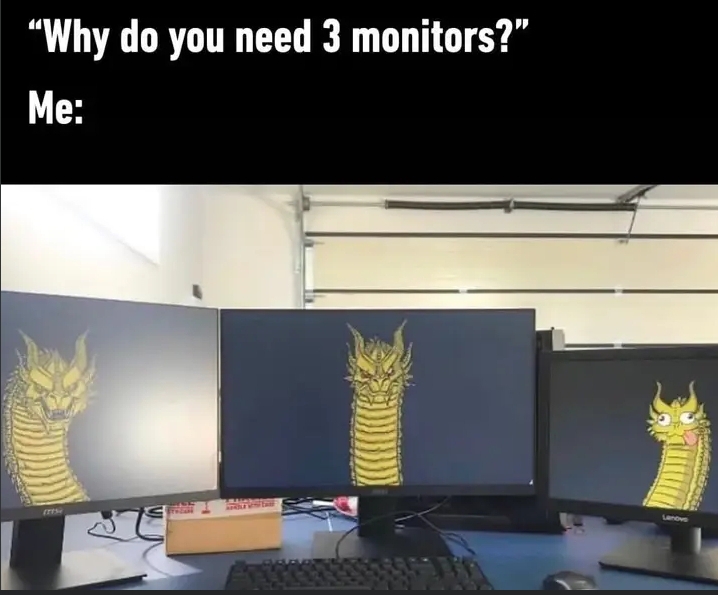this post was submitted on 14 Dec 2024
910 points (98.6% liked)
Memes
50208 readers
1116 users here now
Rules:
- Be civil and nice.
- Try not to excessively repost, as a rule of thumb, wait at least 2 months to do it if you have to.
founded 6 years ago
MODERATORS
you are viewing a single comment's thread
view the rest of the comments
view the rest of the comments

Resolution - having a big screen at the same resolution doesn't really mean much, and you usually don't really go higher than 4K for computer monitors. Yes, there are 8K TVs, but good luck being able to afford one.
Performance - if you want to go big, you're probably thinking of TV screens, and TVs generally just aren't built for colour accuracy, low latency, or high refresh rates.
Cost - bigger computer monitors are pricier. Besides, if you are upgrading your monitor anyways, well, your old one can just become your secondary display; it's free screen estate.
Ergonomics - it takes less effort to look from side to side than it is to look up and down. With multiple smaller screens, you can arrange them all to face you cockpit-style; with a giant screen, the edges will look distorted unless you buy a curved display.
Software - most OSs can snap windows to the four quadrants of each display; anything smaller or more unique, and you will have to manually resize each window.
Practicality - if you're working, gaming, or watching a movie, you want to dedicate an entire screen to your task at hand. Having multiple monitors lets you do that while still being able to check other things on the side. For example, when I stream games, I can play while having my OBS and Twitch stats on the side; when I do any design work, I can pull up references on my secondary display. The black bars are a non-issue.